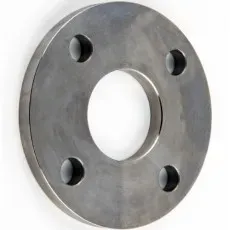-
Cangzhou Yulong Steel Co., Ltd.
-
Phone:
+86 13303177267 -
Email:
admin@ylsteelfittings.com
- English
- Arabic
- Italian
- Spanish
- Portuguese
- German
- kazakh
- Persian
- Greek
- French
- Russian
- Polish
- Thai
- Indonesian
- Vietnamese
- Zulu
- Korean
- Uzbek
- Hindi
- Serbian
- Malay
- Ukrainian
- Gujarati
- Haitian Creole
- hausa
- hawaiian
- Hebrew
- Miao
- Hungarian
- Icelandic
- igbo
- irish
- Japanese
- Javanese
- Kannada
- Khmer
- Rwandese
- Afrikaans
- Albanian
- Amharic
- Armenian
- Azerbaijani
- Basque
- Belarusian
- Bengali
- Bosnian
- Bulgarian
- Catalan
- Cebuano
- China
- China (Taiwan)
- Corsican
- Croatian
- Czech
- Danish
- Esperanto
- Estonian
- Finnish
- Frisian
- Galician
- Georgian
- Kurdish
- Kyrgyz
- Lao
- Latin
- Latvian
- Lithuanian
- Luxembourgish
- Macedonian
- Malgashi
- Malayalam
- Maltese
- Maori
- Marathi
- Mongolian
- Myanmar
- Nepali
- Norwegian
- Norwegian
- Occitan
- Pashto
- Dutch
- Punjabi
- Romanian
- Samoan
- Scottish Gaelic
- Sesotho
- Shona
- Sindhi
- Sinhala
- Slovak
- Slovenian
- Somali
- Sundanese
- Swahili
- Swedish
- Tagalog
- Tajik
- Tamil
- Tatar
- Telugu
- Turkish
- Turkmen
- Urdu
- Uighur
- Welsh
- Bantu
- Yiddish
- Yoruba

Dec . 23, 2024 11:40 Back to list
Techniques for Bending Steel Tubing Without Specialized Tools or Equipment
Bending steel tubing without a bender might seem like a daunting task, especially if you're accustomed to using specialized machinery. However, with the right techniques and tools, you can achieve satisfactory results even while working in a DIY environment. Whether you're building a custom frame, a railing, or any other project, here’s a guide on how to effectively bend steel tubing without a dedicated bender.
Understanding Steel Tubing
Before diving into the techniques, it’s essential to understand the type of steel tubing you’re working with. Steel tubing is typically measured by its outside diameter (OD) and wall thickness. Thinner walls are generally easier to bend, while thicker walls may require more effort and a different approach to avoid crumpling or deforming the material.
Tools You Will Need
To bend steel tubing without a bender, you will need a few basic tools
1. Heat Source A propane torch or acetylene torch will work well to heat specific areas of the tubing.
2. Pipe Wrench or Vise These tools can help in holding the tubing in place during the bending process.
3. Wood Blocks or Iron Bars These can be used as leverage and to provide support while bending.
4. Tape Measure and Marker For marking the area where you want to bend the tubing.
5. Safety Gear Gloves, goggles, and a long-sleeve shirt to protect yourself from heat and sharp edges.
Marking the Bend
Start by measuring and marking the exact spot on the tubing where you’d like to make the bend. Make sure to account for the radius of the bend; generally, a larger radius will yield a smoother curve. Use a tape measure and a marker to indicate the bending point clearly.
bending steel tubing without a bender

Heating the Tubing
Using your heat source, apply heat to the marked area of the tubing. It’s crucial to heat it evenly to avoid any weak points or burns. The goal is to reach a temperature where the steel becomes easily malleable, typically around 1000 degrees Fahrenheit. Be patient; heating too quickly can lead to inhomogeneous heating and uneven bending.
Bending the Tubing
Once the tubing is hot enough, use a pipe wrench or vise to grip one end firmly. Gradually apply pressure to the other end of the tubing to begin bending. If you have wooden blocks or iron bars, place them against the tubing to enhance leverage and to guide the bend. Always bend slowly—fast movements can lead to kinks in the tubing.
If you’re aiming for a sharper angle, it might help to heat a larger section of the tubing to reduce the risk of deformation. For more gradual bends, focus on the area nearest to the bend point.
Cooling and Reinforcing
After achieving the desired bend, it’s time to cool the tubing. You can let it cool naturally or use water to expedite the process, but be careful of steam and potential splashes. Once cool, you may want to reinforce the bend with additional welding if necessary, especially for structural applications.
Final Touches
Inspect the bend for any irregularities. If you notice a kink or if the bend did not form as expected, you can adjust it by gently reapplying heat and fine-tuning the shape. Remember, practice makes perfect; the more you work with tubing, the better you'll become at predicting how it will behave.
Conclusion
Bending steel tubing without a bender is a skill that can be mastered with patience and practice. While it may not yield perfectly uniform results as a machine would, with the right technique and tools, you can successfully create bends for various projects. As with any metalworking technique, always prioritize safety and take your time to avoid rushed mistakes. Happy bending!
Latest news
-
ANSI 150P SS304 SO FLANGE
NewsFeb.14,2025
-
ASTM A333GR6 STEEL PIPE
NewsJan.20,2025
-
ANSI B16.5 WELDING NECK FLANGE
NewsJan.15,2026
-
ANSI B16.5 SLIP-ON FLANGE
NewsApr.19,2024
-
SABS 1123 FLANGE
NewsJan.15,2025
-
DIN86044 PLATE FLANGE
NewsApr.19,2024
-
DIN2527 BLIND FLANGE
NewsApr.12,2024
-
JIS B2311 Butt-Welding Fittings LR/SR 45°/90° /180°Seamless/Weld
NewsApr.23,2024











